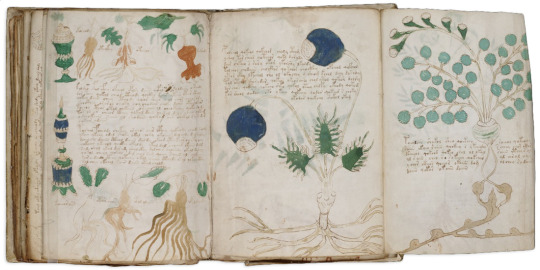#the voynichs
Text
there's this one historical power couple whose dynamic i'm just obsessed with, both born in the mid 1800s. michał wojnicz (anglicized wilfrid voynich) was a polish book dealer who discovered what's today called the voynich manuscript, a mysterious book made of parchment carbon-dated to the early 1400s, full of fantastical illustrations and written in a (possibly coded) language that to this day with all the tech we have is still unintelligible to us.
michał was married to ethel boole, an irish novelist and pianist who was the first person to translate fryderyk chopin's correspondence from polish to english (published under e.l. voynich). since i study chopin documents as a hobby, i can only imagine being the first person to try to put those into english with little historical research to go on, and polish wasn't her native language... it must've been super difficult, and she couldn't even say shit because there was poor michał sitting in the other corner pulling his hair out over a LITERALLY indecipherable manuscript.
ethel: gosh this passage is so odd, i don't know if --
michał: WHAT DID U SAY
#also they were both anti tsarist revolutionaries#the voynichs#history#literature#chopin#voynich manuscript
407 notes
·
View notes
Text

Voynich Manuscript
285 notes
·
View notes
Text


(trips over my priestly robes and falls down a flight of stairs)
#voynich manuscript posting#fear and hunger#fear and hunger fanart#fear and hunger 1#funger 1#f&h#funger#funger fanart#nosramus#fear and hunger nosramus#nosramus fear and hunger#art tag
330 notes
·
View notes
Text
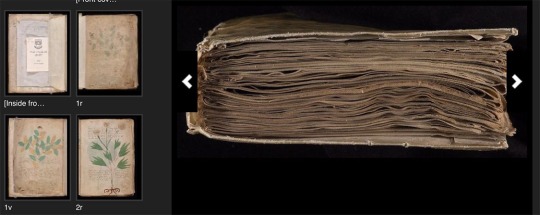
CIPHER MANUSCRIPT [aka VOYNICH MANUSCRIPT] by Roger Bacon[?] (Central Europe, c.1401-1599) 18th -19th century binding.
‘Scientific or magical text in an unidentified language, in cipher, apparently based on Roman minuscule characters; the text is believed by some scholars to be the work of Roger Bacon since the themes as the illustrations seem to represent topics know to have interested Bacon…. A history of the numerous attempts to decipher the manuscript can be found in a volume edited by R.S Brumbaugh THE MOST MYSTERIOUS MANUSCRIPT: The Voynich “Roger Bacon” Cipher Manuscript (Carbondale, IL, 1978). Although several scholars have claimed decipherments of the manuscript, for the most part the text remains an unsolved puzzle.’ — from an abstract by the Beinecke Rare Book and Manuscript Library at Yale
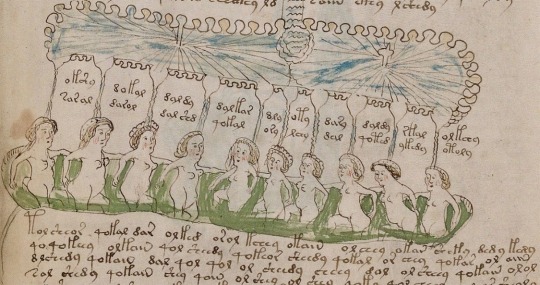
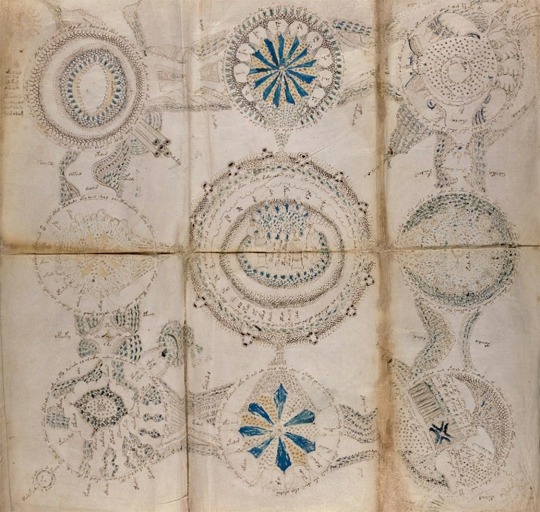






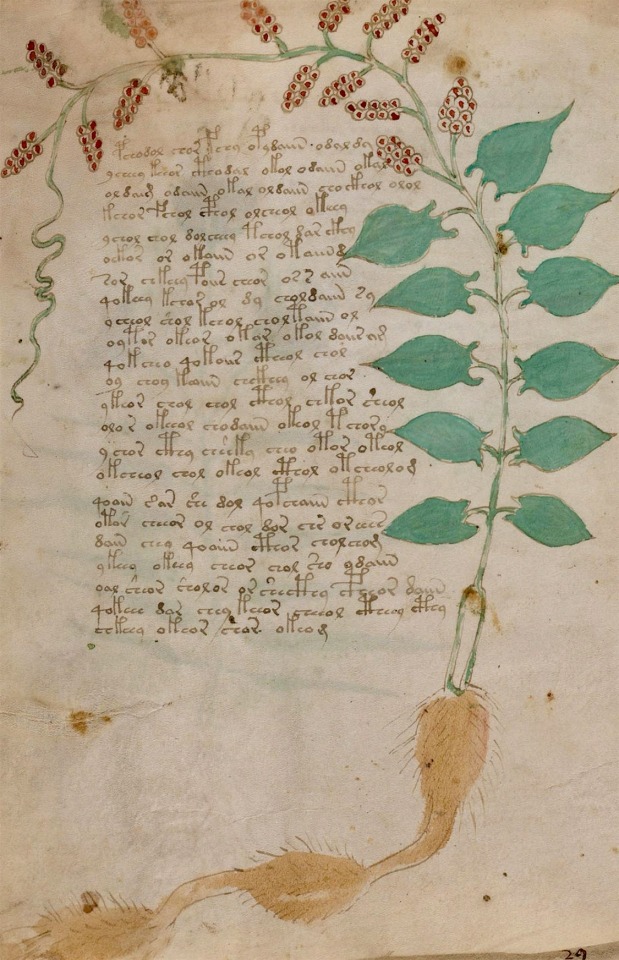
source [digitized]
#beautiful books#book blog#books books books#books#incunabula#illustrated book#ciphertext#cipher#roger bacon#voynich manuscript#the voynich code#mystery#biological diversity#symbols#rare books
222 notes
·
View notes
Text


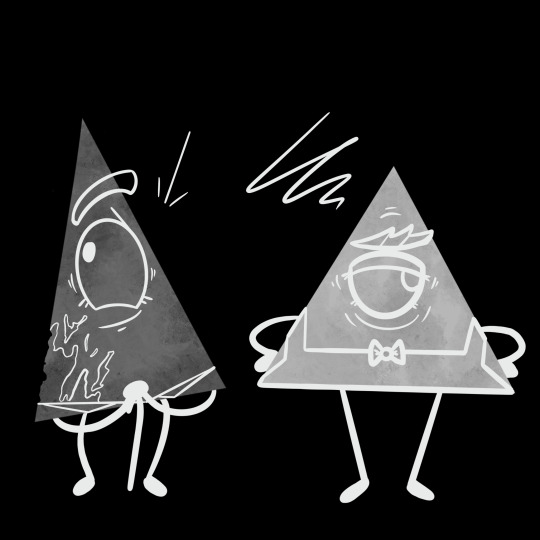
quick little thing of the main characters of my flatland/gravity falls fic in the style of my old flatland short film, since i was thinking about it
#flatland#gravity falls#flatland: a romance of many dimensions#bill cipher#andrew kryptos#realizing this is the first time most of you have seen my flatland ocs!#Clementine Playfair (the abnormal line) is bill’s coworker and the equilateral (Chuck Voynich) is bill’s boss#Clem’s dad Teddy is the iscosceles and her boyfriend Gus Sebald is the Polygon#(yes the practically Irreggular daughter of a disabled isosceles is being courted by a Polygon it’s all very scandalous)#gus is very sweet tho. only nice polygon oc I have he’s very much the black sheep of his family#anyway andy has no friends his age other than bill and spends most of his time loitering where bill works#so he’s also friends with everyone here#probably should have drawn bill and Andy’s parents but their families both suck so I didn’t want to#also thought about drawing my main regular line oc but… I haven’t introduced her yet so#style is a little different mostly because nobody had legs in my old film but ah well. they look better with legs and clothes#and clothes are actually weirdly important to my fic if you've read it
141 notes
·
View notes
Text
43 notes
·
View notes
Text
Anyone else just start thinking about the Voynich Manuscript sometimes
59 notes
·
View notes
Text
For 600 years, the Voynich manuscript has intrigued scholars and mystery lovers alike with its indecipherable text and cryptic illustrations. A new theory suggests that this medieval puzzle might partly detail subjects of sex and conception!
33 notes
·
View notes
Text
Y'all I'm reading up on Wilfred Voynich, and this dude is low-key kind of Aziraphale coded. So my new head cannon is that Wilfred Voynich is actually Aziraphale using a pseudonym
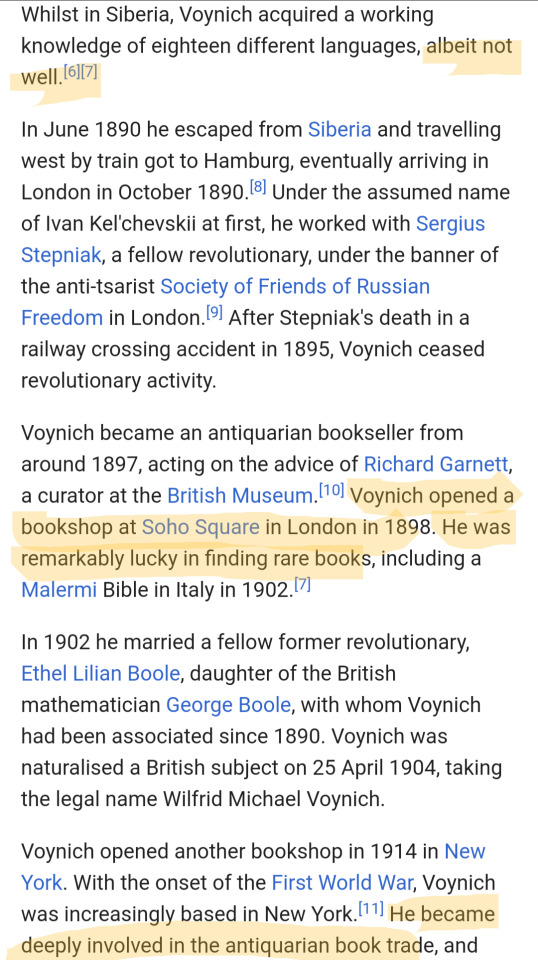
30 notes
·
View notes
Text
Kind of obsessed with the Cipher Manuscript (aka the Voynich Manuscript) as seen on Mystery Files. Here’s some of the photos from The Beinecke.
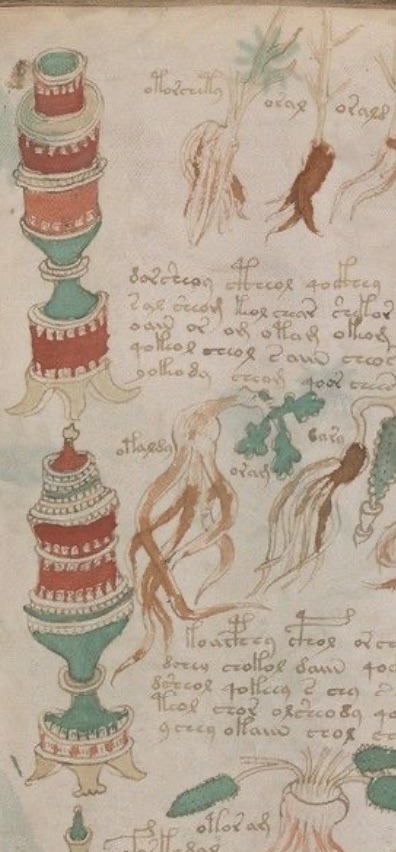





The book has been fully digitized by them and is available here.
#voynich manuscript#mystery files#cipher manuscript#watcher#watcher entertainment#beinecke rare book and manuscript library
35 notes
·
View notes
Text

Manga (and one webcomic) 3x3
#the voynich hotel#you and i are polar opposites#lotta svard#golden kamuy#yokohama kaidashi kikou#girls' last tour#shiori experience#shoujo jiten#end of goldfish kingdom
22 notes
·
View notes
Text

Codex Seraphinianus (Luigi Serafini)
"The Codex is an encyclopedia in manuscript with copious hand-drawn, colored-pencil illustrations of bizarre and fantastical flora, fauna, anatomies, fashions, and foods. It has been compared to the still undeciphered Voynich manuscript, the story "Tlön, Uqbar, Orbis Tertius" by Jorge Luis Borges, and the artwork of M. C. Escher and Hieronymus Bosch. The illustrations are often surreal parodies of things in the real world, such as a bleeding fruit, a plant that grows into roughly the shape of a chair and is subsequently made into one, and a copulating couple who metamorphose into an alligator. Others depict odd, apparently senseless machines, often with delicate appearances and bound by tiny filaments. Some illustrations are recognizable as maps or human faces, while others (especially in the "physics" chapter) are mostly or totally abstract. Nearly all of the illustrations are brightly coloured and highly detailed.
The false writing system appears modeled on Western writing systems, with left-to-right writing in rows and an alphabet with uppercase and lowercase letters, some of which double as numerals. Some letters appear only at the beginning or end of words, similar to Semitic writing systems. The curvilinear letters are rope- or thread-like, with loops and even knots, and are somewhat reminiscent of Sinhala script. In a talk at the Oxford University Society of Bibliophiles […] Serafini stated that there is no meaning behind the Codex's script, which is asemic; that his experience in writing it was similar to automatic writing; and that what he wanted his alphabet to convey was the sensation children feel with books they cannot yet understand, although they see that the writing makes sense for adults.
Take a look for yourself"
Voynich Manuscript (Unknown)
"Many call the fifteenth-century codex, commonly known as the “Voynich Manuscript,” the world’s most mysterious book. Written in an unknown script by an unknown author, the manuscript has no clearer purpose now than when it was rediscovered in 1912 by rare books dealer Wilfrid Voynich. It's a strange code describing alchemical formulae and unknown life forms, and no one understands it. It's a mystery waiting for you to lose yourself in its pages, as Voynich himself was lost. There's an episode of Mystery Files about it!"
#spiral poll#the spiral#poll#the magnus archives#leitner tournament#Codex Seraphinianus#Luigi Serafini#Voynich Manuscript
25 notes
·
View notes
Text
My take on the Voynich Manuscript:
It was written by someone who was literate (obviously), artistically skilled, and knowledgeable in a wide range of subjects. Like a proto-Galileo.
It was written partially in abbreviated Latin. Up until very recently, anyone with a Western formal education worth its salt knew Latin.
The author was extremely bright and had a formal Western education at the very least. Likely came from a wealthy family and/or had a rich benefactor. They were important enough that their name and title are possibly still written down somewhere.
It was written partially in Old (High?) German, some 300 years after the language had evolved into Middle High German. Correct me if I'm wrong. That's the equivalent of someone today being fluent in Early Modern (Shakespearen) English. Certainly not impossible, but not something a layman would easily understand.
The author has spent an extensive amount of time studying old texts. Shit that's hard to get your hands on. This person was a scholar that had access to an impressive library.
The Old German/Latin abrv. mishmash is written out phonetically using a version of the old Turkic alphabet. That's kind of vague as hell and covers a huge timespan. Looks like Manichaean script to me, but I'm sure as shit no historical linguist. If anyone knows what it is, that could help us narrow down the timeframe.
The mid-east was bangin around this era. It was THE hot spot for discovery and innovation for pretty much anything.
The author was a polyglot who knew at least two archaic writing systems. They were either well-traveled or had sweet sweet neworking connections to the cool acedemics out east. Specifically: access to their rare books.
The book is coded, presumably to keep the information out of the hands of anyone without the cipher. This makes me think occult, so I'm inclined to believe the alchemist angle. A court alchemist would have access to the crown's deep pockets and private libraries. The coding would conceal any work a benefactor might find scandalous or heretical.
We have a rough timeframe. Finding the author is now a process of eliminating people who wouldn't have access to the knowledge and resources necessary to code the book. So, how many kingdoms in Europe had court alchemists, global connections, and the money to throw around for research? How many of those alchemists studied these subjects?
#mystery files#it might also be worth searching the illustrations for insignias of either the benefactor or occultist group the author belonged to#the voynich manuscript#watcher#watcher entertainment#linguistics#historical linguistics
21 notes
·
View notes
Text
The Professor and Ryan Bergara, "Mystery Files: The World’s Most Mysterious Book That No One Can Decode
The Professor: Oh great work, Ber-goos, a jelly bean for you.
Ryan: Ooh, jelly beans, toss one in my mouth.
(The professor tosses a bunch of jelly beans and bonks Ryan in the face with them)
Ryan: Ah!
The Professor: All right, I'm gonna go, bye.
20 notes
·
View notes
Text

Voynich Manuscript -
The Voynich manuscript is an enigmatic and mysterious book that has puzzled researchers, linguists, and cryptographers for centuries. Named after Wilfrid Voynich, a Polish book dealer who acquired it in 1912, the manuscript is believed to have been created in the early 15th century. It is named after him because he played a significant role in popularizing and bringing attention to the manuscript.
The Voynich manuscript is written on vellum (animal skin) and contains around 240 pages of text and illustrations. It is written in an unknown script that has not been deciphered, making it one of the most famous and enduring unsolved mysteries in the field of cryptography. The script consists of unusual characters and symbols arranged in a structured manner, resembling a written language, but one that remains unintelligible to researchers.
Accompanying the text are numerous illustrations of various plants, astronomical diagrams, astrological symbols, and surreal scenes featuring naked women bathing in pools or interacting with mysterious tubes and machinery. The botanical drawings, in particular, depict plants that do not resemble any known species, adding to the intrigue surrounding the manuscript.
Over the years, many theories have emerged about the origins and purpose of the Voynich manuscript. Some hypotheses suggest it was an elaborate hoax or an encrypted code containing valuable information, such as alchemical or herbal knowledge. Others propose that it is a constructed language or an unknown natural language. However, despite numerous attempts by scholars and cryptographers to decipher the text, no consensus has been reached regarding its meaning or origin.
The Voynich manuscript has been studied extensively by researchers, including codebreakers during World War II, professional cryptographers, and historians. It has been carbon-dated, confirming its medieval origin, and has undergone various forms of analysis, such as linguistic, statistical, and computational methods. However, no breakthroughs have occurred that definitively unlock the mysteries contained within its pages.
The manuscript is currently housed at the Beinecke Rare Book & Manuscript Library at Yale University, where it remains a subject of ongoing research and public fascination. Despite the lack of progress in deciphering its contents, the Voynich manuscript continues to captivate imaginations and stands as a testament to the enduring power of unsolved mysteries.
Read more
#Voynich manuscript#unsolved mystery#mystery#wikipedia#weird facts#weird history#strange facts#strange history#artifacts#random fact
86 notes
·
View notes

